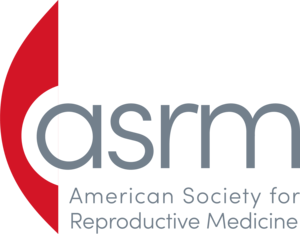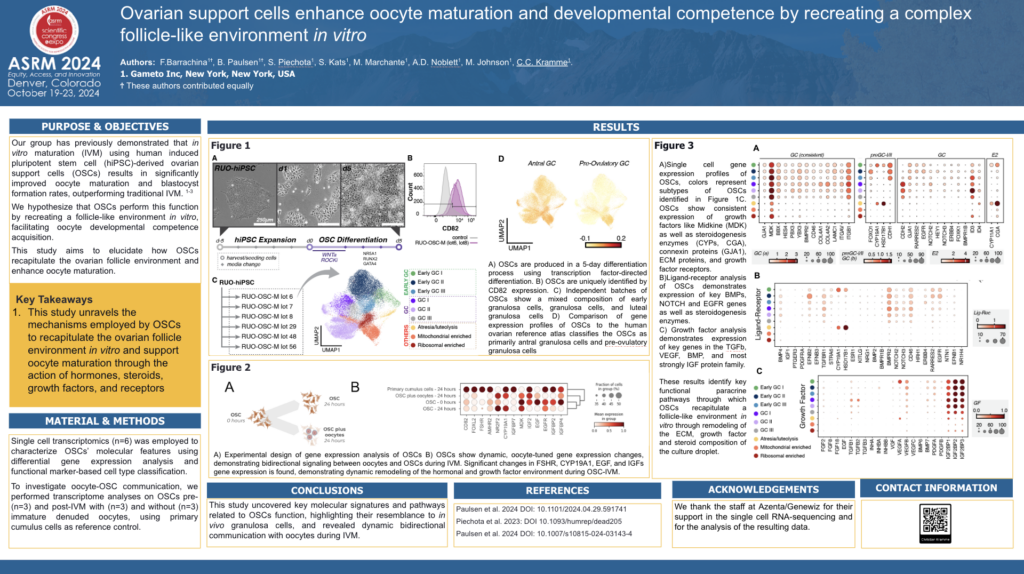Keywords: Ovarian support cells, in vitro maturation, stem cells, granulosa cells, omics
Objective: Our group has previously demonstrated that in vitro maturation (IVM) using human induced pluripotent stem cell (hiPSC)-derived ovarian support cells (OSCs) results in significantly improved oocyte maturation and blastocyst formation rates, outperforming traditional IVM (Piechota et al. 2023; Giovannini et al. 2023). We hypothesize that OSCs perform this function by recreating a follicle-like environment in vitro, facilitating oocyte developmental competence acquisition. However, the underlying mechanisms remain unclear. This study aims to elucidate how OSCs recapitulate the ovarian follicle environment and enhance oocyte maturation.
Materials and methods: Single cell transcriptomics (n=6) was employed to characterize OSCs’ molecular features. Proteomic analyses were performed on OSCs pre- (n=2) and post-IVM (n=2), along with the analysis of secreted proteins (n=2). To investigate oocyte-OSC communication, we performed transcriptome analyses on OSCs pre- (n=3) and post-IVM with (n=3) and without (n=3) immature denuded oocytes, using primary cumulus cells as reference control.
Results: We previously demonstrated the generation of functional OSCs via transcription factor overexpression (Pierson Smela et al. 2023). Here, by using single cell transcriptomics and a publicly available dataset on human folliculogenesis (Zhang et al., 2018), we demonstrate OSCs closely resemble granulosa cells (GCs) from an early to a late antral stage, expressing high levels of key ligand-receptors (BMP4, TGFBR1, NOTCH2/3) and growth factor genes (TGFB1/2, VEGFA/B, BMP7, PDGFA) with critical roles for oocyte-GC interaction and folliculogenesis. Proteomic analyses unraveled overexpression of key metabolic pathways in OSCs during IVM, consistent with the critical role of GC metabolism in supporting oocyte development. Notably, we identified OSC secreted growth factors involved in promoting oocyte maturation and developmental competency (MDK, FGF2, IGFBP2/3). Bulk transcriptomics demonstrated that OSCs retain their transcriptomic signature during IVM when cultured alone, but shift their transcriptomic profile when co-cultured with denuded oocytes to resemble primary cumulus cells, indicating oocyte-directed remodeling of OSC gene expression.
Conclusion: This study uncovered key molecular signatures and pathways related to OSCs function, highlighting their resemblance to in vivo granulosa cells, and revealed dynamic bidirectional communication with oocytes during IVM.
Impact statement: This study unravels the mechanisms employed by OSCs to recapitulate the ovarian follicle environment in vitro and support oocyte maturation.

